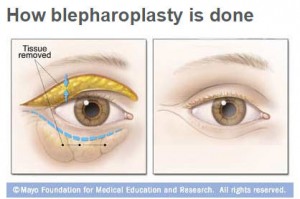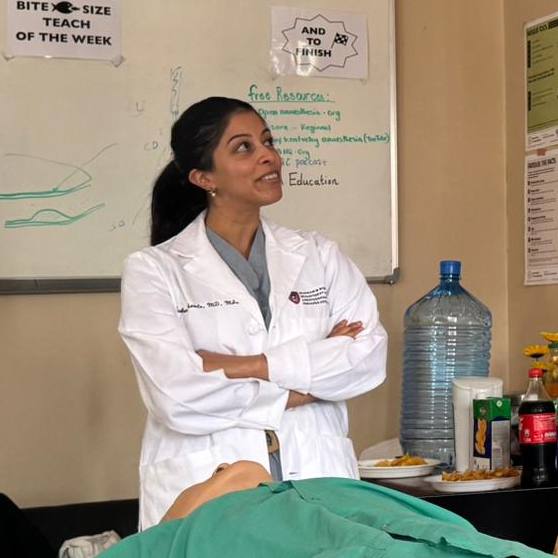-
Tuesday Q and A: Eyelid lift can help reduce vision problems caused by excess skin
 DEAR MAYO CLINIC: I just turned 48 and am considering having blepharoplasty surgery to remove the excess skin on my eyelids, which has bothered me for years. What does this procedure involve? What are the risks? Is the change permanent, or is there a chance my eyelids will return to the way they look now?
DEAR MAYO CLINIC: I just turned 48 and am considering having blepharoplasty surgery to remove the excess skin on my eyelids, which has bothered me for years. What does this procedure involve? What are the risks? Is the change permanent, or is there a chance my eyelids will return to the way they look now?
ANSWER: The surgery you are considering typically includes removing extra skin, muscle and fat from both the upper and lower eyelids. Blepharoplasty, also called an eyelid lift, can help reduce vision problems caused by excess eyelid skin. It also can make your eyes look younger and more alert. As with all surgery, there are risks involved.
As you age, your eyelids stretch, and the muscles supporting them get weaker. As that happens, extra fat may gather above and below your eyelids, causing droopy upper lids and bags under your eyes. If the skin around your eyes sags significantly, it can make it harder to see, especially in the upper and outer parts of your field of vision. Eyelid surgery may be able to reduce or eliminate these problems.
Blepharoplasty is usually done on an outpatient basis, so you do not need to stay in the hospital. The procedure can be done while you are awake. You receive medication to help you relax, and medication is injected into your eyelids to make them numb. Blepharoplasty also can be done while you are asleep under a general anesthetic.
During blepharoplasty, your surgeon cuts along the creases of your eyelids to trim sagging skin and muscle and remove excess fat. After the excess tissue is removed, your surgeon joins the skin with tiny stitches.
Blepharoplasty typically takes 30 minutes to two hours depending on exactly what is done. It may take longer, however, if other procedures are combined with the eyelid surgery. Even if this is the case, most people can go home the same day that they have the surgery.
Your vision may be blurry for some time after surgery. It typically returns to normal after two or three days. Full recovery takes about two to four weeks. During that time, you may have some bruising around your eyes. As you recover, your eyes may be more sensitive to wind and light. You may notice some double vision or blurry vision from time to time during your recovery.
Benefits of blepharoplasty often include better vision and a more youthful appearance. For some people, those results last a lifetime. For others, droopy eyelids may recur and could require additional surgery.
Other long-term risks from blepharoplasty include developing dry eyes, having difficulty closing your eyes or other eyelid problems. Rarely, the surgery can injure your eye muscles. Everyone who undergoes the procedure has scarring, but in most cases it improves to a point that it is not noticeable. Improvement in the scar can continue for as long as one year after surgery.
The likelihood that you will experience problems after blepharoplasty is lower if you do not have a chronic medical condition, such as diabetes, or another illness that could slow healing. Nonsmokers and people who do not have serious eye problems also tend to have better outcomes from this surgery. Smokers should quit smoking at least one month before surgery to minimize the risk of complications and to improve the outcome.
Having a well-trained, experienced surgeon who is familiar with blepharoplasty also may lower your risk for problems. At Mayo Clinic, blepharoplasty is performed by surgeons in several departments: plastic surgery, ophthalmology and otorhinolaryngology (ENT). You can find information about surgeons in your area at the American Society of Plastic Surgeons website: www.plasticsurgery.org.
Once you find a surgeon you feel comfortable with, talk with him or her about the benefits and risks of eyelid surgery. Together, you can decide if this procedure is a good choice for you. — Uldis Bite, M.D., Plastic and Reconstructive Surgery, Mayo Clinic, Rochester, Minn.







